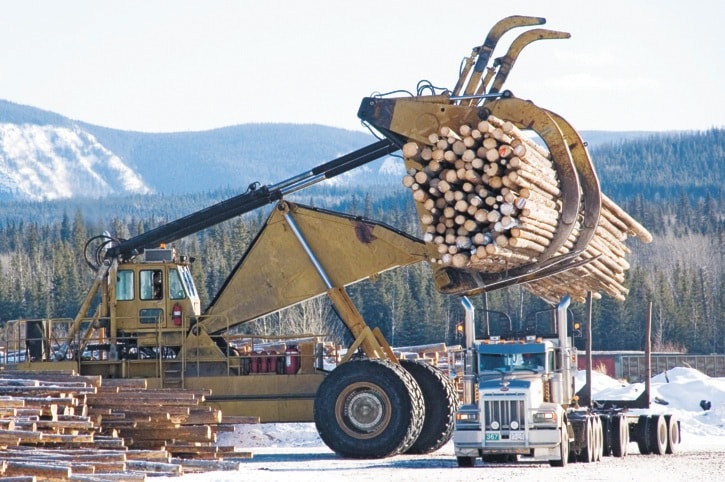Troubled by an audit of how the B.C. government manages timber, mayors and rural directors at the Regional District of Bulkley-Nechako is seeking independent advice on forestry.
On Thursday, the RDBN’s forestry committee discussed what Smithers Mayor Taylor Bachrach called a “pretty damning” report released in February by the B.C. Auditor General.
The report found B.C.’s forests ministry lacks clear timber goals and is not doing enough to replant trees, invest in silviculture, provide accurate forest data, manage big-picture changes or publicly report its results in a measurable way.
In response to the first issue, the ministry said its key timber goals—to maintain
a valuable timber supply and keep wood costs competitive − are set out in law, while more precise targets are decided regionally.
On other issues, the ministry largely defended its record.
For example, the ministry noted that since 2005 it has stepped up replanting to 20 million seedlings to recover areas hit by pine beetles and wildfires.
On the final recommendation, the ministry did agree to start publishing the results of its long-term timber plans in a measurable way.
Lack of public information seemed to be the sticking point among members of the RDBN forestry committee.
“Some of my concern is that quite often this stuff is held behind closed doors,” says Bill Miller, RDBN chair and director of the Burns Lake rural area.
In other cases, Miller said the problem is that the ministry itself seems to lack up-to-date forestry data.
On tree counts, Miller said, “They do a lot of ‘circle the area, count the trees, and extrapolate. That’s not accurate, the Auditor-General has said that, and we’ve known that for years.”
The ministry also needs to start doing inventories of biomass as well as sawlogs, Miller said.
Pellet plants, biofuels companies and others have asked local governments for data on available waste-wood and unconventional timber, he explained, but so far the ministry hasn’t inventoried those types of stands.
A more long-standing problem, Miller says, is that anyone who holds a licence to cut Crown trees—whether they are industry, a community forest, or a First Nations tenure—has to follow stricter stewardship laws than the government itself.
Even before they circle a group of trees for harvest, Miller explained, licence holders are legally required to make detailed plans on how they will protect wildlife, waterways, road access and other values.
After logging, the licence holder has to replant the trees and raise them to “free-growing” stage—a process that takes between seven and 20 years—before the stand returns to the care of the B.C. government.
“Once it turns over to the Crown, there’s no forest stewardship plan anymore,” Miller said, noting that even free-growing stands are vulnerable to wildfires, diseases and new resource projects that all require updated plans.
Aside from long-term issues such as the pine-beetle impact and wildfire risks, the RDBN may turn to independent experts to gauge the province’s recovery plan for the Burns Lake sawmill.
Expected by the end of April, the plan will likely relax some forestry rules, such logging restrictions in scenic areas.
That is a measure all B.C. municipalities have asked the province to consider before, but one that raises particular concern for Smithers and its tourism sector.
“If we’re going to be informed, and have an informed response to this emerging issue, then we need good information,” said Mayor Bachrach.
“I think the difficulty is that sometimes we’re given assurances, but they aren’t necessarily accompanied by the kind of information that backs up those assurances.”
The Auditor-General will post a follow-up report in 2013.
